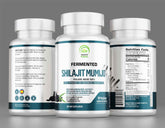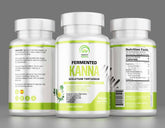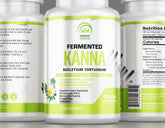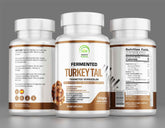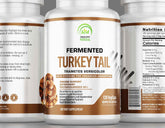Labeling Requirements
Labeling Rules for Dietary Supplements: What You Need to Know
The dietary supplement industry is a dynamic and rapidly growing sector, with consumers increasingly turning to supplements to enhance their health and wellness. From vitamins and minerals to herbal extracts and probiotics, dietary supplements are available in a wide variety of forms and formulations. However, one critical aspect that often determines consumer trust and product success is labeling. Labeling is not just a marketing tool; it is a vital communication medium that informs consumers about the product they are purchasing and consuming. Proper labeling ensures that consumers are well-informed about the contents, usage, benefits, and potential risks associated with dietary supplements.
In this blog, we will delve into the intricacies of labeling requirements in the dietary supplement industry, exploring the essential components that make a label effective, transparent, and compliant with industry standards. We will cover various aspects including the purpose of labeling, key elements that must be included, and the importance of accuracy and transparency.
The Purpose of Labeling in Dietary Supplements
Labeling serves multiple purposes in the dietary supplement industry. It is a critical interface between the manufacturer and the consumer, providing essential information that guides consumer decisions and ensures safe and effective use of the product. Here are the primary purposes of labeling:
Informing Consumers
The most fundamental purpose of labeling is to inform consumers about the dietary supplement. This includes details about what the supplement is, what it contains, how it should be used, and any potential risks associated with its use. By providing this information, labels help consumers make informed choices about which supplements are right for their health needs.
Ensuring Safety
Labels play a crucial role in ensuring the safety of dietary supplements. They provide necessary instructions on the correct dosage and usage, which helps prevent misuse and potential health risks. Labels also include warnings and contraindications that alert consumers to potential interactions with other medications or health conditions.
Enhancing Transparency
Transparency is key to building consumer trust. By clearly stating the ingredients, their quantities, and the source of the ingredients, labels help build credibility and trust in the brand. Transparent labeling reassures consumers that the product contains what it claims and that there are no hidden or harmful substances.
Meeting Legal and Regulatory Requirements
While this blog does not delve into FDA regulations, it is essential to note that labeling must comply with specific legal and regulatory requirements. These requirements are designed to protect consumers and ensure that the information provided on labels is truthful, not misleading, and scientifically substantiated.
Key Elements of Dietary Supplement Labels
Effective labeling of dietary supplements involves several key elements that must be included to provide comprehensive information to consumers. Each element plays a specific role in conveying critical information about the product. Here are the essential components of dietary supplement labels:
1. Statement of Identity
The statement of identity is the product's name, and it should clearly indicate what the supplement is. This is usually the first piece of information that consumers see on the label, and it should be prominently displayed on the front panel of the packaging.
Example:
- "Vitamin C Supplement"
- "Herbal Extract Dietary Supplement"
The statement of identity helps consumers quickly understand the nature of the product and its intended use.
2. Net Quantity of Contents
The net quantity of contents tells consumers how much of the product is in the package. This information is usually displayed in terms of weight, volume, or numerical count and should be placed on the principal display panel of the packaging.
Example:
- "60 Tablets"
- "120 Capsules"
- "500 ml"
This information helps consumers compare different products and determine how long a package will last based on the recommended dosage.
3. Supplement Facts Panel
The Supplement Facts panel is a critical component of dietary supplement labeling. It provides detailed information about the ingredients in the product, including their quantities and daily values.
Components of the Supplement Facts Panel:
- Serving Size: The recommended amount of the product that should be consumed at one time.
- Servings Per Container: The total number of servings in the package.
- List of Ingredients: Each ingredient in the supplement, including active and inactive ingredients.
- Amount Per Serving: The quantity of each ingredient in a single serving.
- Percent Daily Value (%DV): The percentage of the recommended daily intake for each nutrient based on a 2,000-calorie diet.
The Supplement Facts panel ensures that consumers have detailed information about what they are consuming and how it fits into their overall dietary intake.
4. Ingredient List
In addition to the Supplement Facts panel, a complete list of ingredients must be provided. This list includes all the ingredients in the product, both active and inactive, in descending order by weight.
Example:
- "Active Ingredients: Vitamin C (ascorbic acid), Zinc (zinc gluconate)"
- "Inactive Ingredients: Microcrystalline cellulose, Magnesium stearate, Silicon dioxide"
The ingredient list is crucial for consumers with allergies or sensitivities, as it allows them to identify any substances that may cause adverse reactions.
5. Directions for Use
Clear and concise directions for use are essential to ensure that consumers know how to properly take the dietary supplement. This section should include information on the recommended dosage, the best time to take the supplement, and any specific instructions (e.g., "Take with food" or "Do not exceed recommended dose").
Example:
- "Take two tablets daily with a meal"
- "Mix one scoop with 8 oz of water and consume once daily"
Proper usage instructions help prevent misuse and enhance the effectiveness of the supplement.
6. Warnings and Cautions
The warnings and cautions section provides important safety information to consumers. This may include warnings about potential side effects, interactions with other medications, or contraindications for certain health conditions.
Example:
- "Consult your healthcare provider before use if you are pregnant, nursing, or taking any medications."
- "Do not use if seal under cap is broken or missing."
Warnings and cautions help protect consumers from potential health risks associated with the supplement.
7. Manufacturer Information
The label must include the name and address of the manufacturer, packer, or distributor. This information provides accountability and allows consumers to contact the company if they have any questions or concerns about the product.
Example:
- "Manufactured by ABC Supplements, 123 Health Ave, Wellness City, State, ZIP"
Including manufacturer information helps build trust and transparency between the company and the consumer.
8. Expiry Date and Batch Number
The expiry date indicates the date until which the product is expected to remain effective and safe to use. The batch number is a unique identifier for the specific production batch of the product.
Example:
- "Expiry Date: 12/2023"
- "Batch Number: B123456"
These details are crucial for product traceability and for ensuring that consumers do not use expired supplements.
9. Allergen Information
Allergen information is critical for consumers with food allergies or intolerances. The label should clearly indicate the presence of any common allergens such as peanuts, tree nuts, dairy, soy, gluten, or shellfish.
Example:
- "Contains soy and tree nuts (almonds)."
- "Manufactured in a facility that processes wheat, milk, and shellfish."
Providing allergen information helps prevent allergic reactions and ensures that consumers can make safe choices.
10. Claims and Statements
Many dietary supplements include claims about their benefits or effects. These claims must be truthful and not misleading. There are different types of claims that can be made on dietary supplement labels, including nutrient content claims, health claims, and structure/function claims.
Types of Claims:
- Nutrient Content Claims: Describe the level of a nutrient in the product (e.g., "High in Vitamin C").
- Health Claims: Describe the relationship between a nutrient and a health condition (e.g., "Calcium may help reduce the risk of osteoporosis").
- Structure/Function Claims: Describe the role of a nutrient in normal body function (e.g., "Supports immune health").
Nutrient Content Claims
Nutrient content claims provide information about the level of a specific nutrient in the product. These claims must be based on established criteria and should be easy for consumers to understand.
Examples:
- "Excellent source of Vitamin D"
- "Low in sodium"
- "Contains 50% of the daily value of Vitamin C per serving"
Nutrient content claims help consumers understand the nutritional value of the supplement and how it fits into their diet.
Health Claims
Health claims describe the relationship between a nutrient or ingredient in the dietary supplement and a specific health condition. These claims must be substantiated by scientific evidence and must not be misleading.
Examples:
- "Calcium and Vitamin D may reduce the risk of osteoporosis when taken as part of a balanced diet."
- "Fiber may help reduce the risk of heart disease."
Health claims provide consumers with information about the potential health benefits of the supplement and how it can contribute to their overall health.
Structure/Function Claims
Structure/function claims describe the role of a nutrient or dietary ingredient in maintaining normal body structure or function. These claims must be truthful and not misleading, and they must include a disclaimer stating that the claim has not been evaluated by the FDA.
Examples:
- "Supports healthy immune function"
- "Promotes joint health"
- "Helps maintain healthy skin"
Structure/function claims help consumers understand how the supplement can support their body's normal functions and overall well-being.
The Importance of Accuracy and Transparency in Labeling
Accuracy and transparency in labeling are paramount in the dietary supplement industry. Accurate labeling ensures that consumers have reliable information about the product, while transparency builds trust and credibility. Here are some key reasons why accuracy and transparency are essential:
Building Consumer Trust
Consumers rely on labels to make informed decisions about which dietary supplements to purchase and use. Accurate and transparent labeling helps build trust between the consumer and the manufacturer. When consumers trust the information on the label, they are more likely to become loyal customers and recommend the product to others.
Ensuring Safety and Efficacy
Accurate labeling ensures that consumers use the supplement safely and effectively. Clear instructions on dosage, warnings, and potential interactions help prevent misuse and adverse effects. Transparent ingredient lists and allergen information protect consumers with allergies or sensitivities.
Compliance with Standards
Accurate labeling is essential for compliance with industry standards and regulations. While this blog does not delve into specific regulatory requirements, it is important to note that accurate labeling helps manufacturers avoid legal issues and recalls.
Avoiding Misleading Claims
Misleading claims on dietary supplement labels can have serious consequences. Consumers may be misled into believing that a product can provide benefits that it cannot, leading to disappointment and potential health risks. Accurate and substantiated claims help ensure that consumers have realistic expectations about the product's benefits.
Enhancing Brand Reputation
Brands that prioritize accuracy and transparency in their labeling are more likely to build a positive reputation in the market. Consumers appreciate honesty and integrity, and they are more likely to trust and support brands that provide clear and truthful information.
Best Practices for Effective Labeling
Effective labeling requires careful attention to detail and a commitment to providing accurate and transparent information. Here are some best practices for creating effective dietary supplement labels:
1. Use Clear and Concise Language
The language used on dietary supplement labels should be clear and easy to understand. Avoid technical jargon and use simple, straightforward language to convey information. This helps ensure that consumers can quickly and easily understand the label's contents.
2. Prioritize Legibility
Legibility is crucial for effective labeling. Use a font size and style that is easy to read, and ensure that there is sufficient contrast between the text and the background. Important information, such as warnings and dosage instructions, should be prominently displayed.
3. Provide Comprehensive Information
Ensure that all necessary information is included on the label, including the statement of identity, net quantity of contents, Supplement Facts panel, ingredient list, directions for use, warnings, manufacturer information, expiry date, batch number, allergen information, and claims. Comprehensive labeling helps consumers make informed decisions.
4. Verify Ingredient Accuracy
Verify the accuracy of the ingredient list and the Supplement Facts panel. Ensure that all ingredients are listed in the correct order and that their quantities are accurately stated. Regularly review and update this information to reflect any changes in the formulation.
5. Substantiate Claims with Evidence
Ensure that all claims made on the label are substantiated by scientific evidence. Avoid making exaggerated or unsupported claims, and include disclaimers where necessary. Transparent and truthful claims help build consumer trust and avoid misleading consumers.
6. Include Contact Information
Provide clear contact information for the manufacturer, packer, or distributor. This allows consumers to reach out with any questions or concerns and helps build transparency and trust.
7. Regularly Review and Update Labels
Regularly review and update labels to ensure they remain accurate and compliant with industry standards. This includes updating ingredient lists, claims, and other information as needed. Regular reviews help ensure that labels remain relevant and informative.
8. Conduct Consumer Testing
Consider conducting consumer testing to evaluate the effectiveness of your labels. This can involve gathering feedback from consumers on the clarity, readability, and overall effectiveness of the label. Consumer testing helps identify areas for improvement and ensures that labels meet consumer needs.
The Role of Technology in Labeling
Technology plays an increasingly important role in the labeling of dietary supplements. Advances in digital tools and platforms have made it easier for manufacturers to create, manage, and update labels. Here are some ways technology is enhancing labeling in the dietary supplement industry:
Digital Labeling Platforms
Digital labeling platforms provide manufacturers with tools to design, manage, and update labels efficiently. These platforms offer features such as template creation, version control, and automated compliance checks, helping ensure that labels are accurate and up-to-date.
QR Codes and Smart Labels
QR codes and smart labels provide consumers with easy access to additional information about the product. By scanning a QR code with their smartphone, consumers can access detailed information about the supplement, including ingredient sources, manufacturing processes, and third-party testing results. This enhances transparency and provides consumers with more comprehensive information.
Blockchain for Traceability
Blockchain technology offers a secure and transparent way to track and verify the journey of dietary supplements from raw material sourcing to the final product. By integrating blockchain into labeling, manufacturers can provide consumers with verifiable information about the product's authenticity and quality.
Augmented Reality (AR) Labels
Augmented Reality (AR) labels provide an interactive and engaging way for consumers to learn about dietary supplements. By scanning an AR label with their smartphone, consumers can access interactive content, such as 3D models of the ingredients, videos explaining the benefits of the supplement, and interactive dosage instructions. AR labels enhance the consumer experience and provide an innovative way to convey information.
Data Analytics for Consumer Insights
Data analytics tools help manufacturers gather and analyze consumer feedback on labels. By analyzing data on how consumers interact with labels, manufacturers can identify trends, preferences, and areas for improvement. This data-driven approach helps create more effective and consumer-friendly labels.
Conclusion
Labeling is a critical aspect of the dietary supplement industry, playing a vital role in informing consumers, ensuring safety, enhancing transparency, and building trust. By including essential components such as the statement of identity, net quantity of contents, Supplement Facts panel, ingredient list, directions for use, warnings, manufacturer information, expiry date, batch number, allergen information, and claims, manufacturers can create effective and comprehensive labels.
Accuracy and transparency are paramount in labeling, as they help build consumer trust, ensure safety and efficacy, comply with industry standards, avoid misleading claims, and enhance brand reputation. By following best practices such as using clear and concise language, prioritizing legibility, providing comprehensive information, verifying ingredient accuracy, substantiating claims with evidence, including contact information, regularly reviewing and updating labels, and conducting consumer testing, manufacturers can create labels that meet consumer needs and expectations.
Technology is also playing an increasingly important role in labeling, with digital labeling platforms, QR codes and smart labels, blockchain for traceability, augmented reality labels, and data analytics providing innovative and effective ways to enhance labeling.
Ultimately, effective labeling is about more than just compliance; it is about ensuring that consumers have the information they need to make informed choices and use dietary supplements safely and effectively. By prioritizing accuracy, transparency, and consumer needs, the dietary supplement industry can continue to build trust and provide high-quality products that support health and wellness.
Adverse Event Reporting in Dietary Supplements: Safeguarding Consumer Health
Adverse event reporting (AER) plays a critical role in safeguarding consumer health by identifying and addressing potential risks associated with dietary supplements..
- Choosing a selection results in a full page refresh.



